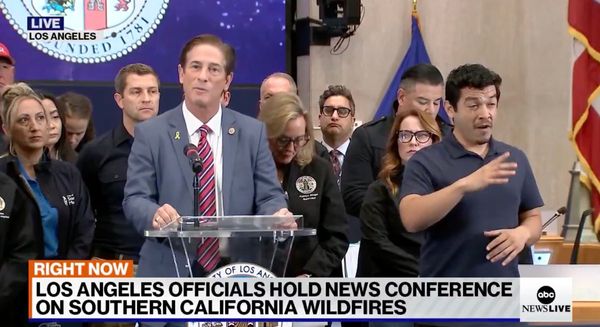MINNEAPOLIS — Jeremy Dickson knows well the sound of a phone not ringing.
The owner of Canoe Canada Outfitters in Atikokan, Ontario, Dickson until two years ago oversaw a business that flew 1,500 anglers into outpost cabins and outfitted as many as 3,000 paddlers into Ontario's 1.2 million-acre Quetico Provincial Park, which lies adjacent to Minnesota's similarly sized Boundary Waters Canoe Area Wilderness.
That all ended when COVID-19 arrived.
"Basically, we haven't been in business for two years,'' Dickson said.
He's hoping that changes this summer. With Canada again open to vaccinated and COVID-tested Americans, Dickson is preparing once more to outfit paddlers into Quetico, the BWCA's lesser-known wilderness sibling.
Because Canadians represent less than 8% of Dickson's paddling customers, Americans are critical to the success of his outfitting business.
Yet for Dickson and just about everyone else affiliated with the canoe country that stretches along the Minnesota-Ontario border, much about the coming summer is unclear.
On Jan. 26, when the U.S. Forest Service begins accepting BWCA entry-permit reservations, the picture will come somewhat more into focus.
Last month the service announced it will issue fewer permits this summer than in 2021 — 13% fewer, according to Ely outfitter Steve Piragis — due to increased crowding and in some cases inconsiderate behavior by some paddlers in 2020 and in the early months last summer.
BWCA visitor numbers rose about 16% in 2020 from 2019, from 25,000 to more than 30,000. Paddling interest was again high in 2021 before wildfires shut down the BWCA for a while.
Americans have shown heightened interest in many types of outdoor recreation since the onset of the pandemic, which likely explains the increased appeal of the BWCA.
But closure of the Canadian border throughout 2020 and until August of last year prohibited entry to Quetico from the north by Americans and also likely played a role in BWCA crowding.
With the border open again, some paddlers who otherwise might have canoed the BWCA this summer will instead opt for Quetico. In fact, Dickson and other Atikokan area outfitters have already taken paddling reservations from Minnesotans for entry to the Canadian park beginning as early as May 21, when the Ontario walleye season opens.
A wild card this summer for Dickson and many others interested in or affiliated with Quetico is Canada's Remote Area Border Crossing (RABC) program, which allows entry into Canada in certain remote areas from the U.S. without reporting to a Canadian port of entry.
The program has been a big deal for Americans for a long time for entry into Quetico in both summer and winter. But currently it is suspended for border canoe country, and chances it will be reconstituted by summer are slim, given the COVID testing and other information required at Fort Frances and other larger border crossing locations.
Whether smaller Canadian ports of entry will be open this summer that could facilitate access by canoeists to both sides of the border also is unknown.
One such outpost is the Canadian port of entry on Sand Point Lake, which is connected to Crane Lake and farther north to Namakan Lake. The Sand Point station is critical for convenient entry to western portions of the BWCA and Quetico.
Paddlers, for example, who want to enter the Canadian wilderness through Lac la Croix, which straddles the border, typically are transported from Crane Lake to Lac la Croix by towboat and stop en route at Sand Point to clear Canadian Customs. Floatplanes carrying Ontario-bound anglers also often clear at Sand Point.
Fishing and paddling customers of Zup's Resort and Canoe Outfitters on Lac la Croix are particularly dependent on the Sand Point station, as are Anderson Canoe Outfitters on Crane Lake and Campbell's Cabins and Air Services on Lac la Croix, among other businesses.
I emailed the Canadian Border Service Agency about the fate this summer of the Sand Point entry station and an agency employee named Allan Donovan in Halifax, Nova Scotia, replied.
"Given the ever-changing circumstances surrounding the COVID-19 pandemic,'' Donovan said, "it is too early to know if the Sand Point Lake port of entry will be open this summer. You may wish to consult the Sand Point Lake directory page closer to the regular seasonal opening date to see if the temporary service suspension has been lifted.''
Another consideration this summer for U.S. and Canadian paddlers alike will be fire, particularly the remains of last summer's infernos.
By policy, Canada allowed most of Quetico's 35 fire starts last year to burn. Several of these merged in the park's south-central region, torching about 14% of the wilderness.
Park officials said 22% of Quetico's 2021 fires were high severity, meaning most affected trees were destroyed; 25% were of moderate to high severity; 25% were moderate to low severity, and 15% were low severity, defined as surface fires that burned few mature trees.
"Our plan is to open the entire Quetico to visitors this summer,'' said park superintendent Trevor Gibb. "We plan to make canoeists aware of where the fires burned so they can plan their trips accordingly.''
Added Gibb: "We're hopeful this summer that more of our American visitors can make it to Canada to canoe Quetico. Some questions remain. But I can say this. If the paddling season would start tomorrow, the land border crossings at Fort Frances and Pigeon River (on the North Shore, near Grand Portage, Minn.) are open.''







